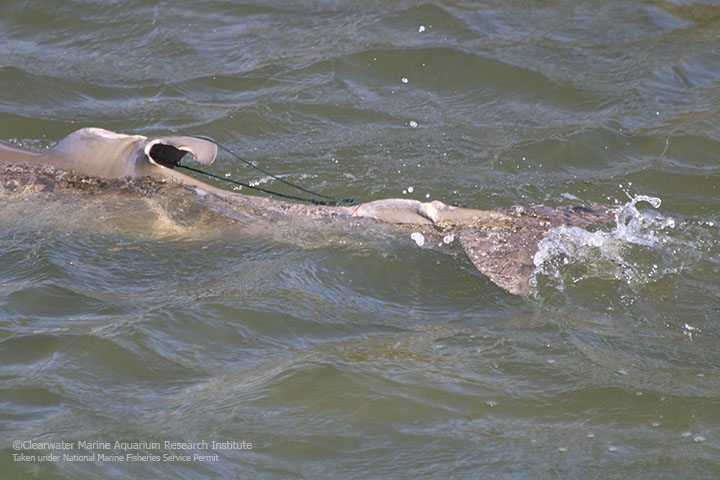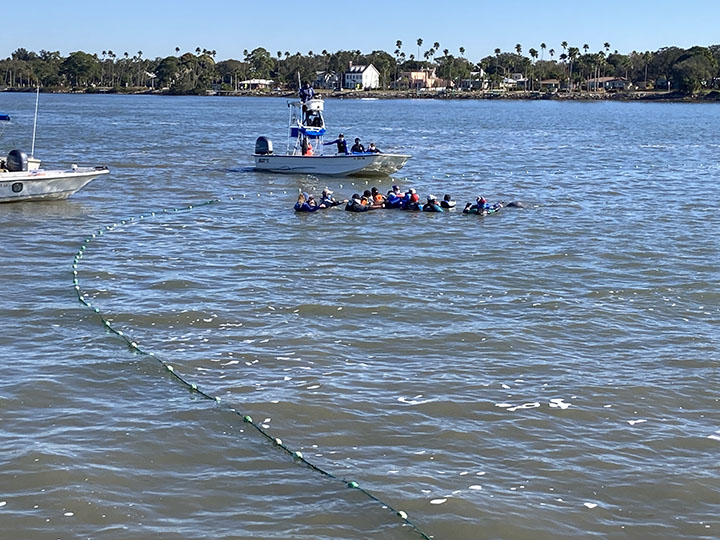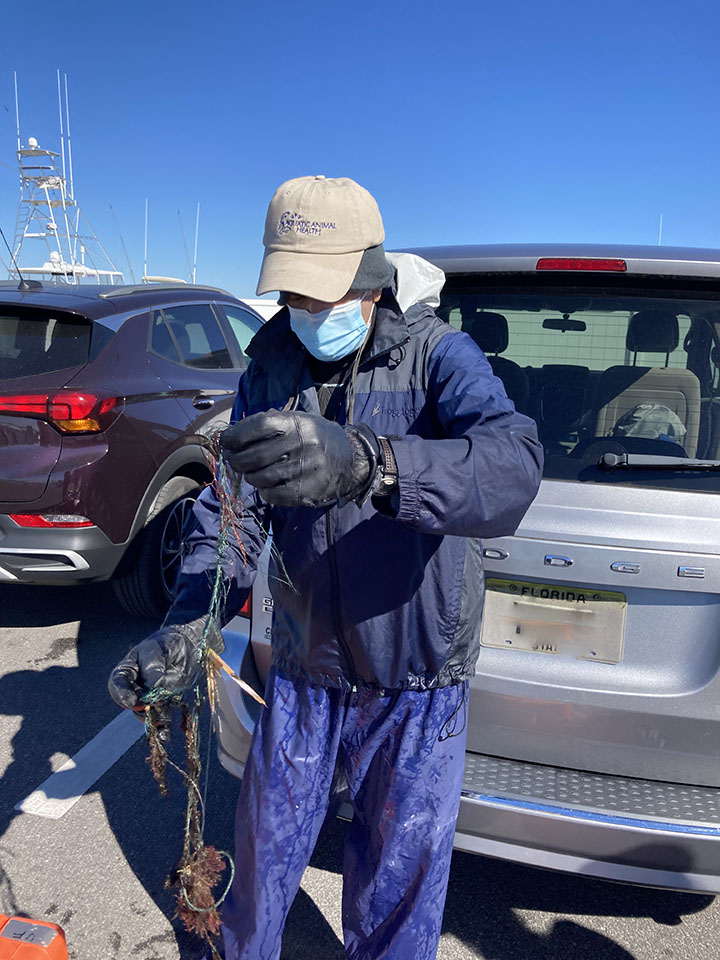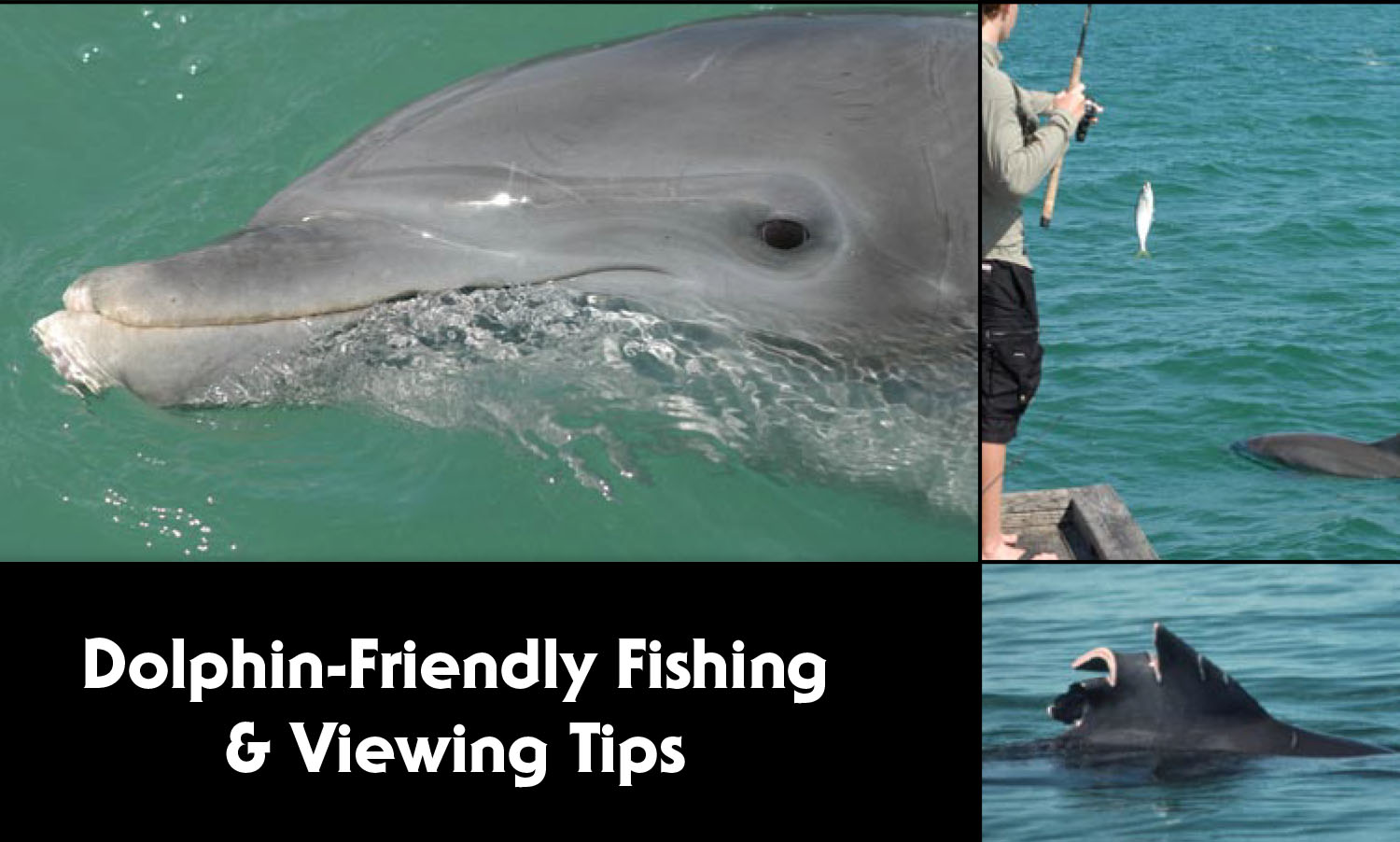A Risky Dolphin Rescue Near Clearwater Beach, Florida
—Notes from the Field from SDRP Director Dr. Randy Wells
This month (January 2022), we were asked by NOAA’s National Marine Fisheries Service (NMFS) to lead a risky rescue: A dolphin living to our north near Clearwater monitored by the Clearwater Marine Aquarium Research Institute (CMA) was badly entangled in fishing line. The line had severed much of the dolphin’s dorsal fin and was continuing to cut into the animal.

The dolphin, a 2021 calf still paired with its mother, “Matilda,” was first observed by CMA entangled in the line on Dec. 4. CMA continued to monitor the calf to see if it would shed the line on its own and also worked with the Fish and Wildlife Conservation Commission (FWC) to attempt to remove the line remotely using a long-handled cutting tool. But despite its compromised condition, the calf was highly mobile and managed to evade the team attempting to remove the line. CMA continued to observe the calf through December and into January and noted that the entanglement had become even more severe, with line now also wrapping around the dolphin’s peduncle — the place where the dolphin’s tail connects to its body.
On Jan. 13, NMFS held a virtual meeting of veterinarians and biologists to discuss whether to mount a rescue to capture the dolphin and remove the line. While we knew such an operation involved many risks to both the dolphin and the humans, the participants agreed that the calf faced a near-certain and very nasty death if the gear was not removed.
On Jan. 18, SDRP led the rescue attempt — an operation that included eight boats and 38 trained personnel from CMA, FWC, SeaWorld, Mote Marine Laboratory and the NMFS Southeast Regional Office.
The team converged on the Seminole boat ramp at 9 a.m., with a CMA scout team already on the water to search for Matilda and her calf. The pair was spotted north of the ramp, and the rest of the team headed out just before 10 a.m.

The wind was blowing 10-20 knots out of the north and there were whitecaps on the water. Air temperature was 40 degrees and the water temperature was in the low 60s — not one of Florida’s more pleasant days for being outdoors and wet.
At 10:53 a.m., we encircled the dolphins and had both mom and calf restrained in the water by 10:55 a.m. As lead veterinarian Mike Walsh and his veterinary team were quickly removing the line from the calf, the very feisty mom broke away from her handlers but remained near her calf. He finished removing the line and gave the calf — which was determined to be a female — a dose of antibiotics. At 10:58 a.m., both dolphins were released and swam off together.
Dr. Walsh noted afterward that while the calf was very thin, it was in better condition than he had expected, so we have hope that the dolphin will survive.
CMA spotted Matilda and her calf a few days after the intervention and reported that the calf was more active and swimming much better than before the line was removed.
We remain concerned about this dolphin, however. Given the highly disfigured shape of her dorsal fin, she’s at a high risk of continuing to catch line on it, and we may have to intervene again.
Of course, one of the saddest parts of this dolphin’s story is that her life-altering entanglement was a result of human activities and could have been prevented.
The gear that nearly severed her dorsal fin (pictured to the right) included braided, multi-strand fishing line, several types of monofilament and some swivels. Braided line is gaining notoriety among dolphin researchers and stranding response personnel — not for how well it performs for anglers, but for how deadly it is for wildlife.
Braided fishing line left in the environment does not degrade quickly. Instead, it remains an entanglement hazard for dolphins, manatees, sea turtles, and sea birds. We know that fishing line has contributed to the deaths of members of the long-term resident Sarasota Bay dolphin community and we’ve even saved entangled seabirds that we came across during our dolphin surveys.

For many, fishing is truly one of the best things about living in a coastal community. But I believe it also comes with the responsibility to do the least harm. That means reeling in your line when dolphins are in the vicinity, collecting any line that gets caught up in mangroves or wrapped around pilings, using circle and corrodible hooks and, of course, avoiding the use of braided fishing line.
Based on our 50-plus years of dolphin research — and seeing the increasing human impacts on the dolphin community over those decades — we’ve developed tips that you can use to be dolphin-friendly anglers. Please download the guide and feel free to share it with your family and friends. These tips could save a dolphin’s life.
Until next month, here’s to fair winds and entanglement-free seas.
Randy Wells
Be Dolphin Safe
- Don’t feed wild dolphins.
- Reel in your fishing line if dolphins appear.

- Change locations if dolphins show interest in bait or catch.
- Release catch quietly away from dolphins when and where it is possible to do so without violating any state or federal fishing regulations.
- Check gear and terminal tackle to make sure it won’t break off easily and, if your line does break, be sure to collect anything left behind in mangroves or on docks.
- Use circle and corrodible hooks and avoid braided fishing line.
- Stay at least 50 yards away from dolphins.
- Stash your trash in a lidded container on your boat until you can get to shore and dispose of it safely in a place where it will not blow back into the water.




